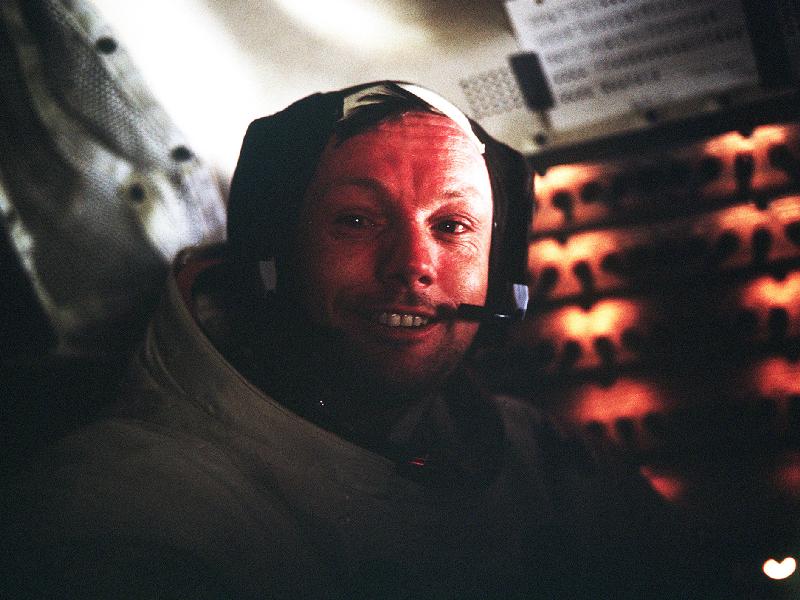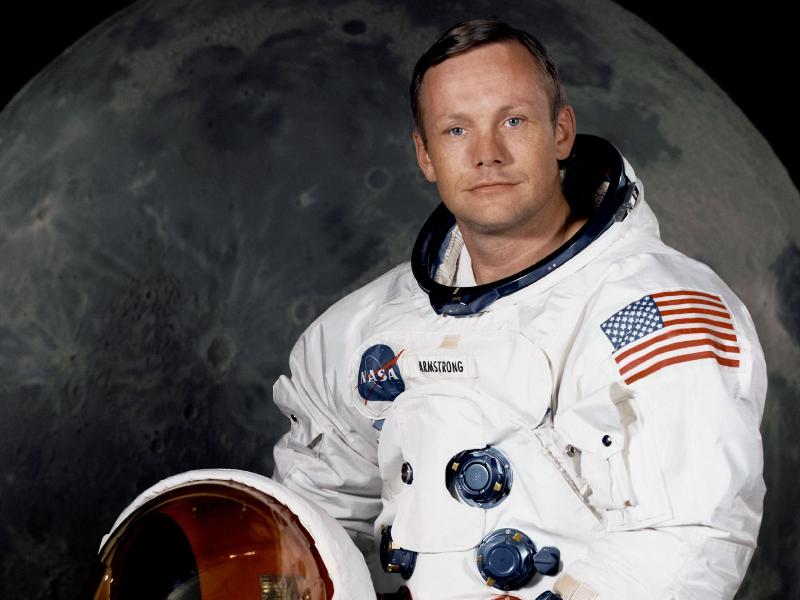SUMMARY
This is AI generated summarization, which may have errors. For context, always refer to the full article.

WASHINGTON, United States – Tributes poured in Sunday, August 26, following the death of Neil Armstrong, the humble US astronaut whose “small step” on the moon captivated the world and came to embody the wonder of space exploration.
Armstrong, who died Saturday at the age of 82 from complications following heart surgery earlier this month, inspired generations to reach for the stars and etched his name next to one of the great milestones of human discovery.
The grainy black-and-white broadcast of Armstrong’s moon walk on July 20, 1969 was seen by some 500 million people, his words capturing the promise of the still-young space age and briefly uniting a planet split by the Cold War.
“That’s one small step for man, one giant leap for mankind,” the earthbound heard Armstrong say, though he later claimed that an “a” before the word “man” had been lost in transmission.
US President Barack Obama, who was just two weeks short of his 8th birthday when the historic mission succeeded, said Armstrong had “delivered a moment of human achievement that will never be forgotten.”
Praising Armstrong as a “reluctant American hero,” his family expressed hope his legacy would encourage young people to “work hard to make their dreams come true, to be willing to explore and push the limits and to selflessly serve a cause greater than themselves.”
The lunar pioneer was decorated by 17 countries and received a slew of US honors, but was never comfortable with his worldwide fame and shied away from the limelight.
In a rare television interview in 2005, Armstrong said he did not deserve the attention he received for being the first man on the moon, just steps ahead of fellow Apollo 11 astronaut Edwin “Buzz” Aldrin.
“I wasn’t chosen to be first. I was just chosen to command that flight. Circumstance put me in that particular role,” he said.
Armstrong even stopped signing memorabilia after learning his autographs were being sold at exorbitant prices.
John Glenn, the first American to orbit Earth, recalled Armstrong’s legendary humility.
“He didn’t feel that he should be out huckstering himself,” the former Ohio senator told CNN Saturday. “He was a humble person, and that’s the way he remained after his lunar flight, as well as before.”
Aldrin said he had hoped that he, Armstrong and Michael Collins, the third astronaut on the mission, would have met up in 2019 for celebrations marking the 50th anniversary of Apollo 11.
“Whenever I look at the moon, it reminds me of the moment over 4 decades ago when I realized that even though we were farther away from Earth than two humans had ever been, we were not alone,” Aldrin said.

On Sunday, more praise poured in from world leaders and fellow astronauts, with French Prime Minister Jean-Marc Ayrault saying that Armstrong’s “small step” had “realized the dream of generations of inventors, scientists, artists, poets or simply amateurs, of the beauties of space.”
European Commission President Jose Manuel Barroso said he “vividly” remembered the night Armstrong and Aldrin landed on the “Sea of Tranquility,” saying Armstrong had “left an eternal footprint on our memories.”
Born in Wapakoneta, Ohio on August 5, 1930, Armstrong had an early fascination with aircraft and worked at a nearby airport when he was a teenager. He received his pilot’s license on his 16th birthday.
A US Navy aviator, he flew 78 missions in the Korean War.
Armstrong joined NASA’s predecessor agency, the National Advisory Committee for Aeronautics, in 1955.
As a research pilot at NASA’s Flight Research Center in Edwards, California, he flew on many pioneering high-speed aircraft, eventually flying over 200 different models, including helicopters, gliders, jets and rockets.
He reached astronaut status in 1962, and was assigned as command pilot for the Gemini 8 mission, during which he performed the first successful docking of two vehicles in space.
After retiring from NASA in 1971, Armstrong taught aerospace engineering at the University of Cincinnati for nearly a decade and served on the boards of several companies, including Lear Jet, United Airlines and Marathon Oil.
In announcing his death, Armstrong’s family said they had a simple request to people in memory of Armstrong’s life.
“Honor his example of service, accomplishment and modesty, and the next time you walk outside on a clear night and see the moon smiling down at you, think of Neil Armstrong and give him a wink,” it said. – Agence France-Presse
Add a comment
How does this make you feel?
There are no comments yet. Add your comment to start the conversation.